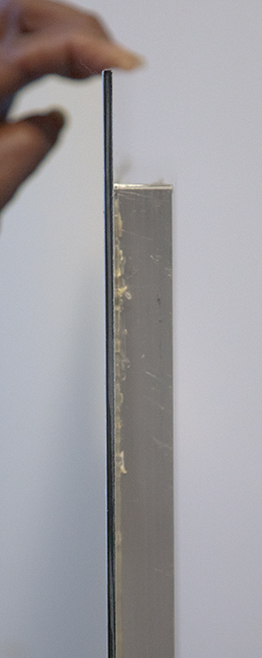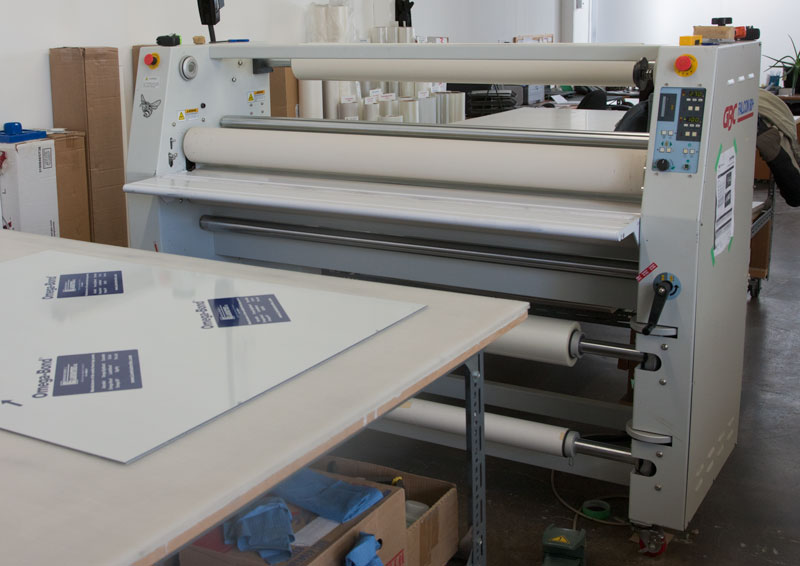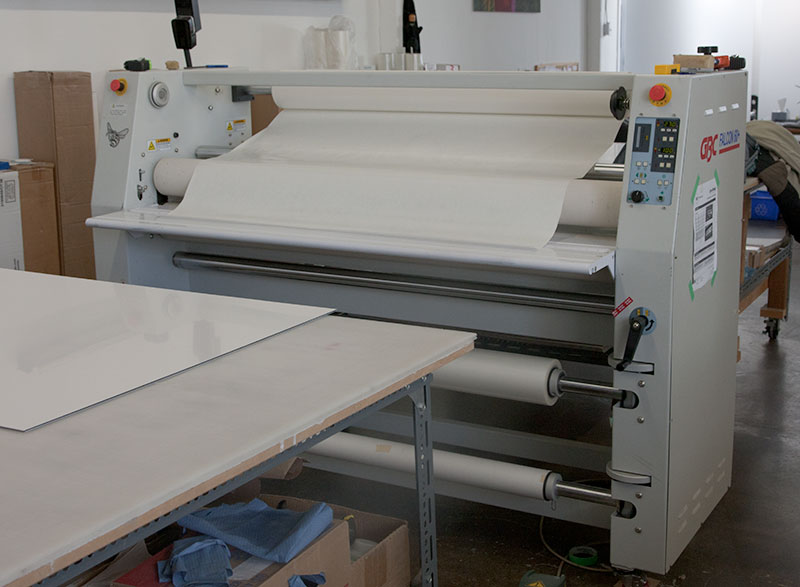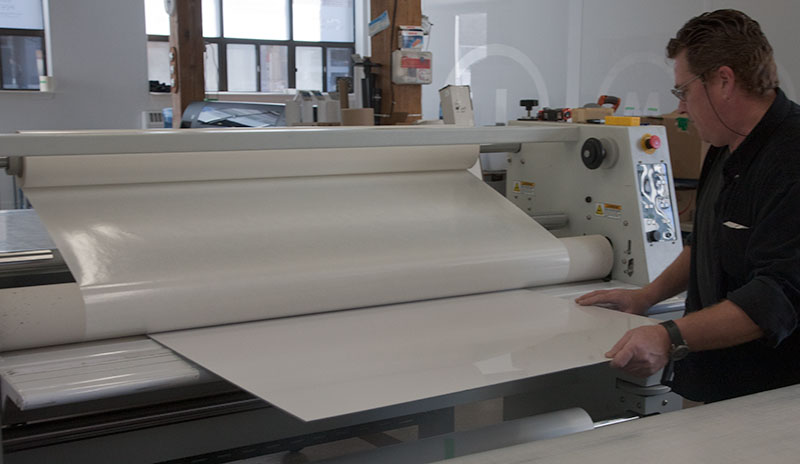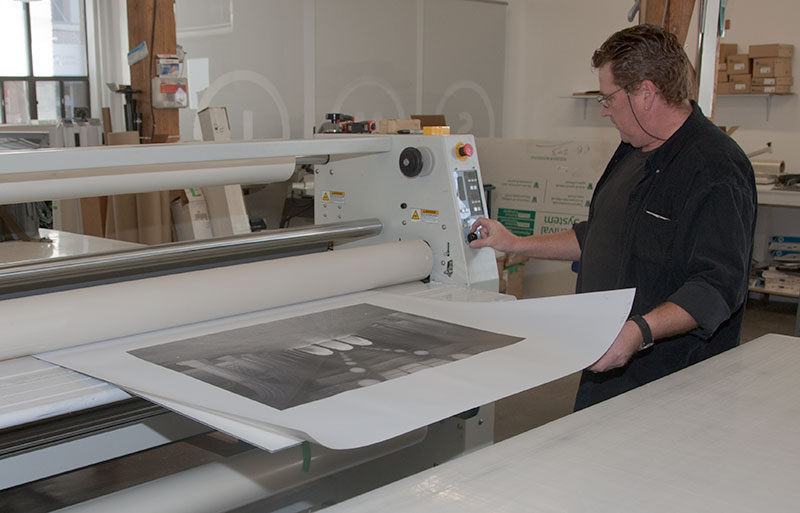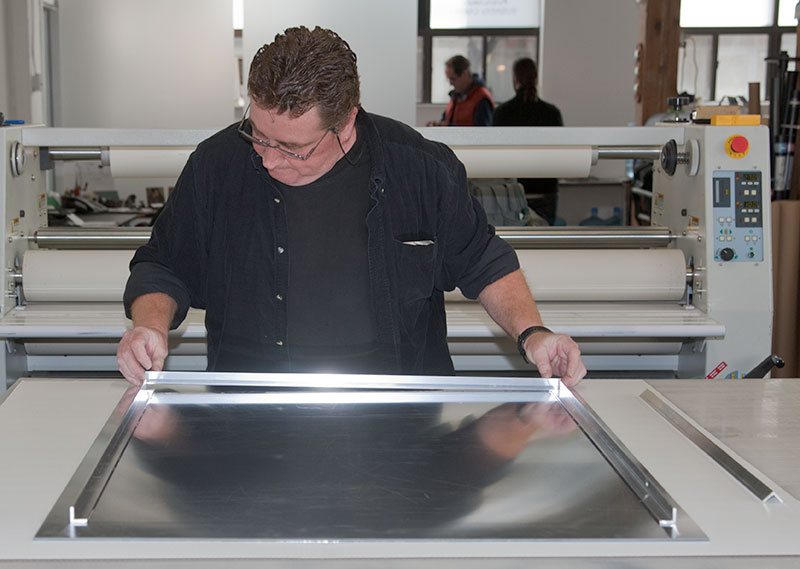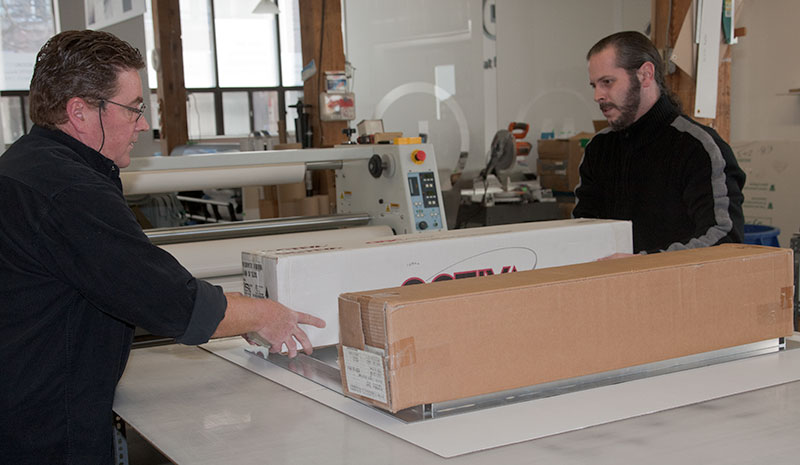CONCEPT
Most materials are subject to thermal expansion: a tendency to expand
when heated, and to contract when cooled. For this reason, bridges are
built with metal expansion joints, so that they can expand and contract
without causing faults in the overall structure of the bridge. Other
machines and structures likewise have built-in protection against the
hazards of thermal expansion. But thermal expansion can also be
advantageous, making possible the workings of thermometers and
thermostats.
HOW IT WORKS
Molecular Translational Energy
In scientific terms, heat is internal energy that flows from a system
of relatively high temperature to one at a relatively low temperature.
The internal energy itself, identified as thermal energy, is what people
commonly mean when they say "heat." A form of kinetic energy due to the
movement of molecules, thermal energy is sometimes called molecular
translational energy.
Temperature is defined as a measure of the average molecular
translational energy in a system, and the greater the temperature change
for most materials, as we shall see, the greater the amount of thermal
expansion. Thus, all these aspects of "heat"
—heat itself (in the scientific sense), as well as thermal energy, temperature, and thermal expansion
—are ultimately affected by the motion of molecules in relation to one another.
MOLECULAR MOTION AND NEWTONIAN PHYSICS.
In general, the kinetic energy created by molecular motion can be understood within the framework of classical physics
—that is, the paradigm associated with Sir
Isaac Newton
(1642-1727) and his laws of motion. Newton was the first to understand
the physical force known as gravity, and he explained the behavior of
objects within the context of gravitational force. Among the concepts
essential to an understanding of Newtonian physics are the mass of an
object, its rate of motion (whether in terms of velocity or
acceleration), and the distance between objects. These, in turn, are all
components central to an understanding of how molecules in relative
motion generate thermal energy.
The greater the momentum of an object
—that is, the product of its mass multiplied by its rate of velocity
—the
greater the impact it has on another object with which it collides. The
greater, also, is its kinetic energy, which is equal to one-half its
mass multiplied by the square of its velocity. The mass of a molecule,
of course, is very small, yet if all the molecules within an object are
in relative motion
—many of them colliding and, thus, transferring kinetic energy
—this is bound to lead to a relatively large amount of thermal energy on the part of the larger object.
MOLECULAR ATTRACTION AND PHASES OF MATTER.
Yet, precisely because molecular mass is so small, gravitational
force alone cannot explain the attraction between molecules. That
attraction instead must be understood in terms of a second type of force
—electromagnetism
—discovered
by Scottish physicist James Clerk Maxwell (1831-1879). The details of
electromagnetic force are not
important here; it is necessary only to know that all molecules possess
some component of electrical charge. Since like charges repel and
opposite charges attract, there is constant electromagnetic interaction
between molecules, and this produces differing degrees of attraction.
The greater the relative motion between molecules, generally
speaking, the less their attraction toward one another. Indeed, these
two aspects of a material
—relative attraction and motion at the molecular level
—determine
whether that material can be classified as a solid, liquid, or gas.
When molecules move slowly in relation to one another, they exert a
strong attraction, and the material of which they are a part is usually
classified as a solid. Molecules of liquid, on the other hand, move at
moderate speeds, and therefore exert a moderate attraction. When
molecules move at high speeds, they exert little or no attraction, and
the material is known as a gas.
Predicting Thermal Expansion
COEFFICIENT OF LINEAR EXPANSION.
A coefficient is a number that serves as a measure for some
characteristic or property. It may also be a factor against which other
values are multiplied to provide a desired result. For any type of
material, it is possible to
calculate the degree to which that material will expand or contract when
exposed to changes in temperature. This is known, in general terms, as
its coefficient of expansion, though, in fact, there are two varieties
of expansion coefficient.
The coefficient of linear expansion is a constant that governs the
degree to which the length of a solid will change as a result of an
alteration in temperature For any given substance, the coefficient of
linear expansion is typically a number expressed in terms of 10
−5/
°C. In other words, the value of a particular solid's linear expansion coefficient is multiplied by 0.00001 per
°C. (The
°C
in the denominator, shown in the equation below, simply "drops out"
when the coefficient of linear expansion is multiplied by the change in
temperature.)
For quartz, the coefficient of linear expansion is 0.05. By contrast,
iron, with a coefficient of 1.2, is 24 times more likely to expand or
contract as a result of changes in temperature. (Steel has the same
value as iron.) The coefficient for aluminum is 2.4, twice that of iron
or steel. This means that an equal temperature change will produce twice
as much change in the length of a bar of aluminum as for a bar of iron.
Lead is among the most expansive solid materials, with a coefficient
equal to 3.0.
CALCULATING LINEAR EXPANSION.
The linear expansion of a given
solid can be calculated according to the formula
δL =
aL OΔT.
The Greek letter delta (d) means "a change in"; hence, the first figure
represents change in length, while the last figure in the equation
stands for change in temperature. The letter
a is the coefficient of linear expansion, and
L O is the original length.
Suppose a bar of lead 5 meters long experiences a temperature change of 10
°C; what will its change in length be? To answer this,
a (3.0
· 10
−5/
°C) must be multiplied by
L O (5 m) and
δT (10
°C). The answer should be 150 & 10
−5
m, or 1.5 mm. Note that this is simply a change in length related to a
change in temperature: if the temperature is raised, the length will
increase, and if the temperature is lowered by 10
°C, the length will decrease by 1.5 mm.
VOLUME EXPANSION.
Obviously, linear equations can only be applied to solids. Liquids
and gases, classified together as fluids, conform to the shape of their
container; hence, the "length" of any given fluid sample is the same as
that of the solid that contains it. Fluids are, however, subject to
volume expansion
—that is, a change in volume as a result of a change in temperature.
To calculate change in volume, the formula is very much the same as
for change in length; only a few particulars are different. In the
formula
δV =
bV OδT, the last term, again, means change in temperature, while
δV means change in volume and
V O is the original volume. The letter
b refers to the coefficient of volume expansion. The latter is expressed in terms of 10
−4/
°C, or 0.0001 per
°C.
Glass has a very low coefficient of volume expansion, 0.2, and that of Pyrex glass is extremely low
—only
0.09. For this reason, items made of Pyrex are ideally suited for
cooking. Significantly higher is the coefficient of volume expansion for
glycerin, an oily substance associated with soap, which expands
proportionally to a factor of 5.1. Even higher is ethyl alcohol, with a
volume expansion coefficient of 7.5.
REAL-LIFE APPLICATIONS
Liquids
Most liquids follow a fairly predictable pattern of gradual volume
increase, as a response to an increase in temperature, and volume
decrease, in response to a decrease in temperature. Indeed, the
coefficient of volume expansion for a liquid generally tends to be
higher than for a solid, and
—with one notable exception discussed below
—a liquid will contract when frozen.
The behavior of gasoline pumped on a hot day provides an example of
liquid thermal expansion in response to an increase in temperature. When
it comes from its underground tank at the gas station, the gasoline is
relatively cool, but it will warm when sitting in the tank of an already
warm car. If the car's tank is filled and the vehicle left to sit in
the sun
—in other words, if the car is not driven after the tank is filled
—the gasoline might very well expand in volume faster than the fuel tank, overflowing onto the pavement.
ENGINE COOLANT.
Another example of thermal expansion on the part of a liquid can be
found inside the car's radiator. If the radiator is "topped off" with
coolant on a cold day, an increase in temperature could very well cause
the coolant to expand until it overflows. In the past, this produced a
problem for car owners, because car engines released the excess volume
of coolant onto the ground, requiring periodic replacement of the fluid.
Later-model cars, however, have an overflow container to collect
fluid released as a result of volume expansion. As the engine cools down
again, the container returns the excess fluid to the radiator, thus,
"recycling" it. This means that newer cars are much less prone to
overheating as older cars. Combined with improvements in radiator fluid
mixtures, which act as antifreeze in cold weather and coolant in hot,
the "recycling" process has led to a significant decrease in breakdowns
related to thermal expansion.
WATER.
One good reason not to use pure water in one's radiator is that water
has a far higher coefficient of volume expansion than a typical engine
coolant. This can be particularly hazardous in cold weather, because
frozen water in a radiator could expand enough to crack the engine
block.
In general, water
—whose volume expansion coefficient in the liquid state is 2.1, and 0.5 in the solid state
—exhibits
a number of interesting characteristics where thermal expansion is
concerned. If water is reduced from its boiling point
—212
°F (100
°C) to 39.2
°F (4
°C)
it will
steadily contract, like any other substance responding to a drop in
temperature. Normally, however, a substance continues to become denser
as it turns from liquid to solid; but this does not occur with water.
At 32.9
°F,
water reaches it maximum density, meaning that its volume, for a given
unit of mass, is at a minimum. Below that temperature, it "should" (if
it were like most types of matter) continue to decrease in volume per
unit of mass, but, in fact, it steadily begins to expand. Thus, it is
less dense, with a greater volume per unit of mass, when it reaches the
freezing point. It is for this reason that when pipes freeze in winter,
they often burst
—explaining why a radiator filled with water could be a serious problem in very cold weather.
In addition, this unusual behavior with regard to thermal expansion
and contraction explains why ice floats: solid water is less dense than
the liquid water below it. As a result, frozen water stays at the top of
a lake in winter; since ice is a poor conductor of heat, energy cannot
escape from the water below it in sufficient amounts to freeze the rest
of the lake water. Thus, the water below the ice stays liquid,
preserving plant and animal life.
Gases
THE GAS LAWS.
As discussed, liquids expand by larger factors than solids do. Given
the increasing amount of molecular kinetic energy for a liquid as
compared to a solid, and for a gas as compared to a liquid, it should
not be surprising, then, to learn that gases respond to changes in
temperature with a volume change even greater than that of liquids. Of
course, where a gas is concerned, "volume" is more difficult to measure,
because a gas simply expands to fill its container. In order for the
term to have any meaning, pressure and temperature must be specified as
well.
A number of the gas laws describe the three parameters for gases:
volume, temperature, and pressure. Boyle's law, for example, holds that
in conditions of constant temperature, an inverse relationship exists
between the volume and pressure of a gas: the greater the pressure, the
less the volume, and vice versa. Even more relevant to the subject of
thermal expansion is Charles's law.
Charles's law states that when pressure is kept constant, there is a
direct relationship between volume and temperature. As a gas heats up,
its volume increases, and when it cools down, its volume reduces
accordingly. Thus, if an air mattress is filled in an air-conditioned
room, and the mattress is then taken to the beach on a hot day, the air
inside will expand. Depending on how much its volume increases, the
expansion of the hot air could cause the mattress to "pop."
VOLUME GAS THERMOMETERS.
Whereas liquids and solids vary significantly with regard to their
expansion coefficients, most gases follow more or less the same pattern
of expansion in response to increases in temperature. The predictable
behavior of gases in these situations led to the development of the
constant gas thermometer, a highly reliable instrument against which
other thermometers
—including those containing mercury (see below)
—are often gauged.
In a volume gas thermometer, an empty container is attached to a
glass tube containing mercury. As gas is released into the empty
container, this causes the column of mercury to move upward. The
difference between the former position of the mercury and its position
after the introduction of the gas shows the difference between normal
atmospheric pressure and the pressure of the gas in the container. It
is, then, possible to use the changes in volume on the part of the gas
as a measure of temperature. The response of most gases, under
conditions of low pressure, to changes in temperature is so uniform that
volume gas thermometers are often used to calibrate other types of
thermometers.
Solids
Many solids are made up of crystals, regular shapes composed of
molecules joined to one another as though on springs. A spring that is
pulled back, just before it is released, is an example of potential
energy, or the energy that an object possesses by virtue of its
position. For a crystalline solid at room temperature, potential energy
and spacing between molecules are relatively low. But as temperature
increases and the solid expands, the space between molecules increases
—as does the potential energy in the solid.
In fact, the responses of solids to changes in temperature tend to be
more dramatic, at least when they are seen in daily life, than are the
behaviors of liquids or gases under conditions of
thermal expansion. Of course, solids actually respond less to changes in
temperature than fluids do; but since they are solids, people expect
their contours to be immovable. Thus, when the volume of a solid changes
as a result of an increase in thermal energy, the outcome is more
noteworthy.
JAR LIDS AND POWER LINES.
An everyday example of thermal expansion can be seen in the kitchen.
Almost everyone has had the experience of trying unsuccessfully to budge
a tight metal lid on a glass container, and after running hot water
over the lid, finding that it gives way and opens at last. The reason
for this is that the high-temperature water causes the metal lid to
expand. On the other hand, glass
—as noted earlier
—has
a low coefficient of expansion. Otherwise, it would expand with the
lid, which would defeat the purpose of running hot water over it. If
glass jars had a high coefficient of expansion, they would deform when
exposed to relatively low levels of heat.
Another example of thermal expansion in a solid is the sagging of
electrical power lines on a hot day. This happens because heat causes
them to expand, and, thus, there is a greater length of power line
extending from pole to pole than under lower temperature conditions. It
is highly unlikely, of course, that the heat of summer could be so great
as to pose a danger of power lines breaking; on the other hand, heat
can create a serious threat with regard to larger structures.
EXPANSION JOINTS.
Most large bridges include expansion joints, which look rather like
two metal combs facing one another, their teeth interlocking. When heat
causes the bridge to expand during the sunlight hours of a hot day, the
two sides of the expansion joint move toward one another; then, as the
bridge cools down after dark, they begin gradually to retract. Thus the
bridge has a built-in safety zone; otherwise, it would have no room for
expansion or contraction in response to temperature changes. As for the
use of the comb shape, this staggers the gap between the two sides of
the expansion joint, thus minimizing the bump motorists experience as
they drive over it.
Expansion joints of a different design can also be found in highways,
and on "highways" of rail. Thermal expansion is a particularly serious
problem where railroad tracks are concerned, since the tracks on which
the trains run are made of steel. Steel, as noted earlier, expands by a
factor of 12 parts in 1 million for every Celsius degree change in
temperature, and while this may not seem like much, it can create a
serious problem under conditions of high temperature.
Most tracks are built from pieces of steel supported by wooden ties,
and laid with a gap between the ends. This gap provides a buffer for
thermal expansion, but there is another matter to consider: the tracks
are bolted to the wooden ties, and if the steel expands too much, it
could pull out these bolts. Hence, instead of being placed in a hole the
same size as the bolt, the bolts are fitted in slots, so that there is
room for the track to slide in place slowly when the temperature rises.
Such an arrangement works agreeably for trains that run at ordinary
speeds: their wheels merely make a noise as they pass over the gaps,
which are rarely wider than 0.5 in (0.013 m). A high-speed train,
however, cannot travel over irregular track; therefore, tracks for
high-speed trains are laid under conditions of relatively high tension.
Hydraulic equipment is used to pull sections of the track taut; then,
once the track is secured in place along the cross ties, the tension is
distributed down the length of the track.
Thermometers and Thermostats
MERCURY IN THERMOMETERS.
A thermometer gauges temperature by measuring a temperature-dependent
property. A thermostat, by contrast, is a device for adjusting the
temperature of a heating or cooling system. Both use the principle of
thermal expansion in their operation. As noted in the example of the
metal lid and glass jar above, glass expands little with changes in
temperature; therefore, it makes an ideal container for the mercury in a
thermometer. As for mercury, it is an ideal thermometric medium
—that is, a material used to gauge temperature
—for several reasons. Among these is a high boiling point, and a highly predictable, uniform response to changes in temperature.
In a typical mercury thermometer, mercury is placed in a long, narrow
sealed tube called a capillary. Because it expands at a much faster
rate than the glass capillary, mercury rises and falls with the
temperature. A thermometer is calibrated by measuring the difference in
height between mercury at the freezing point of water, and mercury at
the boiling point of water. The interval
between these two points is then divided into equal increments in
accordance with one of the well-known temperature scales.
THE BIMETALLIC STRIP IN THERMOSTATS.
In a thermostat, the central component is a bimetallic strip,
consisting of thin strips of two different metals placed back to back.
One of these metals is of a kind that possesses a high coefficient of
linear expansion, while the other metal has a low coefficient. A
temperature increase will cause the side with a higher coefficient to
expand more than the side that is less responsive to temperature
changes. As a result, the bimetallic strip will bend to one side.
When the strip bends far enough, it will close an electrical circuit,
and, thus, direct the air conditioner to go into action. By adjusting
the thermostat, one varies the distance that the bimetallic strip must
be bent in order to close the circuit. Once the air in the room reaches
the desired temperature, the high-coefficient metal will begin to
contract, and the bimetallic strip will straighten. This will cause an
opening of the electrical circuit, disengaging the air conditioner.
In cold weather, when the temperature-control system is geared toward
heating rather than cooling, the bimetallic strip acts in much the same
way
—only this
time, the high-coefficient metal contracts with cold, engaging the
heater. Another type of thermostat uses the expansion of a vapor rather
than a solid. In this case, heating of the vapor causes it to expand,
pushing on a set of brass bellows and closing the circuit, thus,
engaging the air conditioner.
WHERE TO LEARN MORE
Beiser, Arthur.
Physics, 5th ed. Reading, MA: Addison-Wesley, 1991.
"Comparison of Materials: Coefficient of Thermal Expansion" (Web site).
<http://www.handyharmancanada.com/TheBrazingBook/comparis.html> (April 21, 2001).
Encyclopedia of Thermodynamics (Web site).
<http://therion.minpet.unibas.ch/minpet/groups/thermodict/> (April 12, 2001).
Fleisher, Paul.
Matter and Energy: Principles of Matter and Thermodynamics. Minneapolis, MN: Lerner Publications, 2002.
NPL: National Physics Laboratory: Thermal Stuff: Begin ners' Guides (Web site).
<http://www.npl.co.uk/npl/cbtm/thermal/stuff/guides.html> (April 18, 2001).
Royston, Angela.
Hot and Cold. Chicago: Heinemann Library, 2001.
Suplee, Curt.
Everyday Science Explained. Washington, D.C.: National Geographic Society, 1996.
"Thermal Expansion Measurement" (Web site).
<http://www.measurementsgroup.com/guide/tn/tn513/513intro.html> (April 21, 2001).
"Thermal Expansion of Solids and Liquids" (Web site).
<http://www.physics.mun.ca/~gquirion/P2053/html19b/> (April 21, 2001).
Walpole, Brenda.
Temperature. Illustrated by Chris Fair-clough and Dennis Tinkler.
Milwaukee, WI: Gareth Stevens Publishing, 1995.
KEY TERMS
COEFFICIENT:
A number that serves as a measure for some characteristic or
property. A coefficient may also be a factor against which other values
are multiplied to provide a desired result.
COEFFICIENT OF LINEAR EXPANSION:
A figure, constant for any particular type of solid, used in
calculating the amount by which the length of that solid will change as a
result of temperature change. For any given substance, the coefficient
of linear expansion is typically a number expressed in terms of 10
−5/
°C.
COEFFICIENT OF VOLUME EXPANSION:
A figure, constant for any particular type of material, used in
calculating the amount by which the volume of that material will change
as a result of temperature change. For any given substance, the
coefficient of volume expansion is typically a number expressed in terms
of 10
−4/
°C.
HEAT:
Internal thermal energy that flows from one body of matter to another.
KINETIC ENERGY:
The energy that an object possesses by virtue of its motion.
MOLECULAR TRANSLATIONAL ENERGY:
The kinetic energy in a system produced by the movement of molecules in relation to one another.
POTENTIAL ENERGY:
The energy that an object possesses by virtue of its position.
SYSTEM:
In physics, the term "system" usually refers to any set of physical
interactions, or any material body, isolated from the rest of the
universe. Anything outside of the system, including all factors and
forces irrelevant to a discussion of that system, is known as the
environment.
TEMPERATURE:
A measure of the average kinetic energy
—or
molecular translational energy in a system. Differences in temperature
determine the direction of internal energy flow between two systems when
heat is being transferred.
THERMAL ENERGY:
Heat energy, a form of kinetic energy produced by the movement of
atomic or molecular particles. The greater the movement of the
separticles, the greater the thermal energy.
THERMAL EXPANSION:
A property in all types of matter that display a tendency to expand when heated, and to contract when cooled.
Cite this article
Pick a style below, and copy the text for your bibliography.
"
Thermal Expansion."
Science of Everyday Things.
2002.
Encyclopedia.com.
17 Jan. 2016
<http://www.encyclopedia.com>.
Learn more about citation styles
Citation styles
Encyclopedia.com gives you the ability to
cite reference entries and articles according to common styles from the
Modern Language Association (MLA), The Chicago Manual of Style, and the
American Psychological Association (APA).
Within the “Cite this article” tool, pick a
style to see how all available information looks when formatted
according to that style. Then, copy and paste the text into your
bibliography or works cited list.
Because each style has its own formatting
nuances that evolve over time and not all information is available for
every reference entry or article, Encyclopedia.com cannot guarantee each
citation it generates. Therefore, it’s best to use Encyclopedia.com
citations as a starting point before checking the style against your
school or publication’s requirements and the most-recent information
available at these sites:
Notes:
-
Most online reference entries and
articles do not have page numbers. Therefore, that information is
unavailable for most Encyclopedia.com content. However, the date of
retrieval is often important. Refer to each style’s convention
regarding the best way to format page numbers and retrieval dates.
-
In addition to the MLA, Chicago, and APA
styles, your school, university, publication, or institution may have
its own requirements for citations. Therefore, be sure to refer to
those guidelines when editing your bibliography or works cited list.
Thanks to: http://www.encyclopedia.com/topic/Thermal_Expansion.aspx

